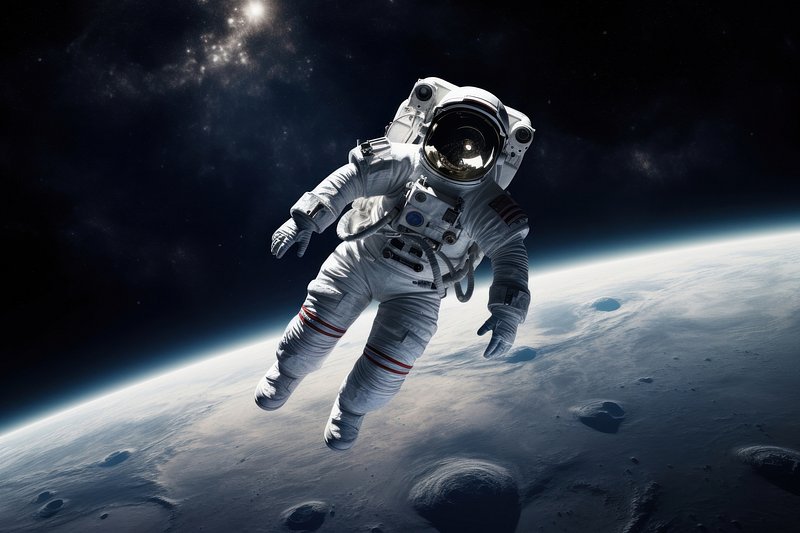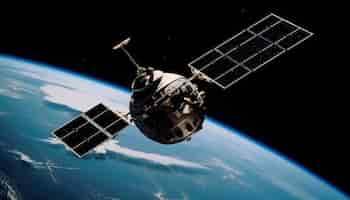The last few decades have witnessed rapid advancements in space technology, transforming our understanding of the universe and our place within it. From satellite launches that enhance communication, navigation, and climate monitoring to interplanetary missions that reveal the secrets of faraway worlds, space technology plays a pivotal role in modern civilization. This blog explores the significant developments in space technology, their impact, and the exciting future possibilities.
1. The Early Days of Space Exploration

Space technology began with the launch of the Soviet satellite *Sputnik 1* in 1957, marking the dawn of the Space Age. This historic event led to the establishment of government space agencies such as NASA (National Aeronautics and Space Administration) in the United States and various space programs across the world. Initially, the race was focused on achieving short-term goals such as sending humans to space, exemplified by *Yuri Gagarin, the first human in space, and **Neil Armstrong*, who became the first person to walk on the Moon in 1969 during the Apollo 11 mission.
These early missions laid the groundwork for future advancements, proving that space exploration was not only possible but could be a path to achieving unprecedented technological breakthroughs.
2. Satellite Technology: Connecting and Observing the World

One of the most critical developments in space technology has been the *launch and deployment of satellites*. Over the years, satellites have become integral to modern life, revolutionizing communication, navigation, and environmental monitoring.
– Communication Satellites: The first communication satellite, *Telstar*, was launched in 1962, and today, thousands of satellites orbit the Earth, enabling global telecommunications. Satellite internet, television broadcasts, and cell phone networks are powered by these technological marvels, ensuring connectivity across even the most remote regions.
– GPS and Navigation Systems: The *Global Positioning System (GPS)*, a network of satellites launched by the United States, has transformed navigation for individuals and industries. From guiding aircraft and ships to aiding drivers and pedestrians, GPS has become essential to daily life.
– Earth Observation Satellites: Satellites like *Landsat* and *Copernicus* have allowed us to monitor the Earth’s surface, oceans, and atmosphere in real time. This technology plays a vital role in tracking climate change, deforestation, natural disasters, and more. For instance, *NOAA (National Oceanic and Atmospheric Administration) satellites help forecast hurricanes, saving countless lives.
3. Space Exploration Beyond the Earth

The space age has progressed from merely sending humans and satellites into orbit to *exploring other planets, moons, and celestial bodies*. Mars, in particular, has captured the imagination of scientists and the public alike.
– *Mars Exploration: NASA’s *Curiosity* and *Perseverance rovers* have been instrumental in uncovering information about Mars’ geology, climate, and the potential for life. In 2021, Perseverance made headlines by collecting rock samples that may hold clues to ancient microbial life on Mars. Additionally, the *Ingenuity helicopter* performed the first controlled flight on another planet, opening new avenues for exploration.
– Moon Missions: After decades of hiatus, space agencies like NASA, ESA (European Space Agency), and China’s CNSA (China National Space Administration) have renewed their interest in the Moon. NASA’s *Artemis program* aims to return humans to the lunar surface, with plans to establish a sustainable presence and use the Moon as a stepping stone for missions to Mars. The launch of Artemis I in 2022 marked a new era of lunar exploration.
– Space Probes and Interplanetary Missions: Probes such as *Voyager 1 and 2, which were launched in 1977, have travelled beyond the solar system, sending back invaluable data. In more recent years, missions like **New Horizons* (which provided the first close-up images of Pluto) and *Juno* (studying Jupiter’s atmosphere) have expanded our understanding of the outer planets and the distant reaches of space.
4. Private Space Companies: A New Era of Innovation

While governments initially led space exploration, the past two decades have seen the rise of *private space companies*, bringing innovation, competition, and reduced costs to space travel.
– SpaceX: Founded by Elon Musk in 2002, SpaceX has revolutionized space travel with its reusable rockets, significantly reducing the cost of launching payloads into space. Its Falcon 9 and Falcon Heavy rockets are used to transport satellites, cargo, and astronauts to the International Space Station (ISS). In 2020, SpaceX’s *Crew Dragon* capsule became the first privately built spacecraft to send humans into orbit. The company’s ambitious *Starship* program aims to transport humans to Mars in the future.
– *Blue Origin and Virgin Galactic: Founded by Jeff Bezos and Richard Branson, respectively, these companies are pioneers in the emerging space tourism industry. *Blue Origin’s New Shepard* and *Virgin Galactic’s SpaceShipTwo* offer suborbital space flights, allowing civilians to experience space travel for the first time.
– *Lowering Costs and Increasing Accessibility: By focusing on reusable spacecraft and cheaper launch technologies, private companies are democratizing space access. This shift means that not only government space agencies but also universities, small businesses, and developing nations can afford to participate in space missions.
5. International Space Cooperation and Space Stations
Space exploration has also seen increased international cooperation. The *International Space Station (ISS)*, a joint project of NASA, Roscosmos, ESA, JAXA (Japan Aerospace Exploration Agency), and CSA (Canadian Space Agency), has been continuously inhabited since 2000. It serves as a laboratory for conducting experiments in microgravity, advancing our understanding of biology, physics, and material science.
– Future Space Stations: With the ISS set to be decommissioned in the coming years, various countries and private companies are planning new space stations. China’s Tiangong space station is already operational, and NASA is exploring the idea of a Lunar Gateway, a space station in orbit around the Moon that will facilitate deep-space exploration.
6. The Role of AI and Robotics in Space
Artificial Intelligence (AI) and robotics are becoming central to space missions. AI is used in autonomous navigation, data analysis, and mission planning. Robots such as the Mars rovers and the Astro-bee robots aboard the ISS perform tasks too dangerous or tedious for astronauts.
Additionally, advancements in 3D printing technology may soon allow astronauts to manufacture tools and even parts of habitats while in space, reducing the need for costly supply missions from Earth.
7. The Future: Space Colonization and Interstellar Travel
Looking ahead, space technology will continue to evolve, with ambitious goals on the horizon.
– Mars Colonization: Elon Musk’s SpaceX envisions establishing a human colony on Mars within the next few decades. This would involve developing sustainable habitats, food production systems, and transportation between Earth and Mars.
– Interstellar Travel: While still in the realm of science fiction, scientists are exploring the possibility of interstellar travel. Concepts such as *warp drives* and *solar sails* are being studied, though we are far from achieving the technology needed to send humans to other star systems.
– *Asteroid Mining: The idea of mining asteroids for resources such as water, precious metals, and minerals is gaining traction. Companies like *Planetary Resources* are working on technologies to extract these resources, which could support space colonies and provide economic opportunities on Earth.

Conclusion
The development of space technology has transformed humanity’s capabilities, offering new tools for communication, exploration, and even survival. As private companies and governments continue to push the boundaries of what is possible, the future of space exploration looks more promising than ever. With each new mission, we not only deepen our understanding of the universe but also lay the foundation for a future where space travel becomes a normal part of human life.
Leave a Reply
You must be logged in to post a comment.